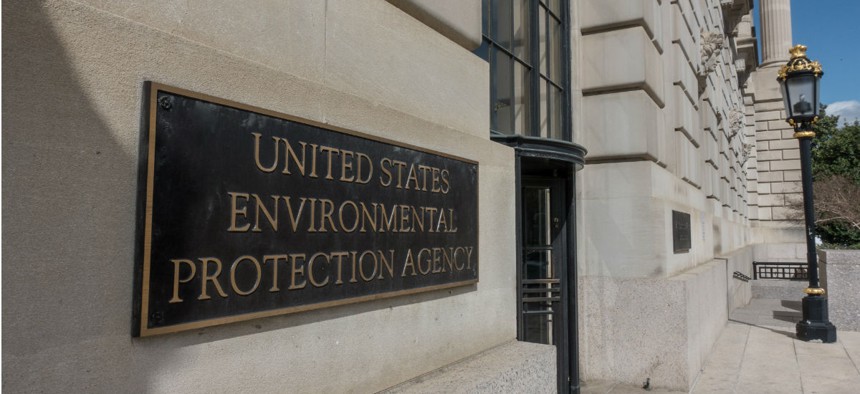Hundreds at EPA Reportedly Take Buyouts or Early Retirement
Union official questions how agency will respond to crises with reduced workforce.
The Environmental Protection Agency reportedly will have shed more than 400 employees by the end of September as a result of the department’s buyout and early retirement effort.
But that number is still far below the goals set by Administrator Scott Pruitt in July. EPA said at the time it would accept a maximum of 1,228 applications through the Voluntary Separation Incentive Payment and Voluntary Early Retirement Authority programs. The agency in May set aside $12 million to pay for the incentives, which max out at $25,000 depending on an employee’s tenure and salary.
According to The Washington Post, 362 employees at the agency have accepted a buyout. In addition, 12 employees retired at the end of August, 33 employees are slated to retire at the end of September, while 45 more are still considering retirement offers.
If all those employees leave the agency, the EPA’s workforce would drop to 14,428, The Washington Post reported, which would mark the smallest workforce the agency has seen since the Reagan administration.
EPA officials did not respond to repeated requests for confirmation of the buyout numbers.
John O’Grady, president of the American Federation of Government Employees National Council of EPA Locals #238, said he fears continued reductions in the EPA workforce like the 25 percent drop proposed in President Trump’s fiscal 2018 budget will make it harder for the agency to respond to a variety of disasters and crises.
“It’s disturbing," he said. "We’re seeing the response to Hurricane Harvey now, and the U.S. EPA has responded to all of the disasters that I can remember going back to the anthrax problem in the Hart Senate Office Building in 2001, Hurricane Katrina and Hurricane Sandy,” he said. “The administration seems intent on getting the numbers [of employees] down further, but the question is: Who’s going to do the job?”
O’Grady said even some of the agency’s work that the EPA leadership touts as its future could get short shrift under reduced staffing levels.
“There’s a lot of talk about doing cooperative federalism, but that’s really a lot of nonsense because we’re doing that now and we’ve been doing it for years,” he said. “You’re cutting the number that go to the states and municipalities, you’re cutting the technical assistance and the federal enforcement [of environmental rules] that is extremely important because pollution doesn’t just stop at state lines.”
Opponents of the workforce cuts will be keeping a close eye on EPA’s responses to Harvey and Irma to see if they suffer from the latest buyouts. O’Grady noted that hurricane relief packages such as the one Congress approved this week typically only include additional appropriations for departments like the Federal Emergency Management Agency and the Small Business Administration.
“One thing we’re trying to find out is whether or not we’re able to respond to Harvey and Irma with the same kind of numbers as we have in the past,” O’Grady said. “Our on-the-scene coordinator staffing is down, so how could we respond with that same kind of vigorous action that we have in the past?”
Congress now has until Dec. 8 to finalize the federal government’s fiscal 2018 budget, following the House passage Friday of a continuing resolution to avert a government shutdown at the end of September. AFGE is planning a march from the National Press Club to EPA headquarters next week to protest the White House’s proposal to cut the agency’s budget by 31 percent.
“We’re trying to step it up a notch, bringing a broader awareness among the American people on the issue, and certainly among legislators in the House and the Senate,” O’Grady said. “The EPA budget is 0.2 percent of the overall federal budget, and it astounds me that what is basically a public health agency, they’re going after it like we were developing nuclear weapons in North Korea.”
NEXT STORY: Trump Signs Funding Measure to Avert Shutdown








